What is Web 2 and Web 3
What is Web 2 and Web 3: All You Want to Know
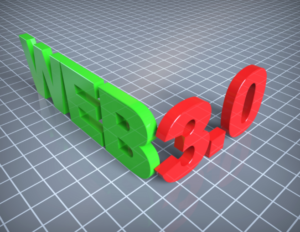
What is Web 2 and Web 3?. The World Wide Web has come a long way since its inception in 1989. The first generation of the web, which we call Web 1.0, was mostly about static pages and documents. You would go to a website, click on a link, and be taken to another page. There was very little interactivity or collaboration.
The second generation of the web, which we call Web 2, was about interactivity and collaboration. Websites became more like online communities, where people could communicate and collaborate on projects. This was made possible by the advent of social networking platforms like Facebook and Twitter and online forums, wikis, and blogs.
Web 3 is the third generation of the web, and it is still in its early stages of development. The main difference between Web 2 and Web 3 is that Web 3 is powered by blockchain technology. This means that there is a decentralized network of computers worldwide that are connected. This has several advantages, such as increased security and privacy and the ability to create Decentralized Applications (DApps).
Web 3 is still in its early stages, but it can potentially change the way we use the internet altogether. Only time will tell if it will live up to its promise. But one thing is for sure: the web is constantly evolving, and it will never be the same again.
What is Web 2.0?
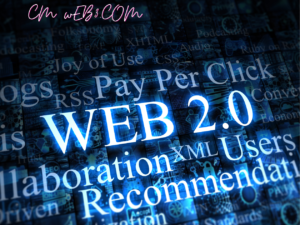
Web 2 is the second generation of the World Wide Web. It was launched in 2005, and it is based on interactive websites and social networking. It enables people to communicate with each other and collaborate on projects online. Web 2 has revolutionized the way people use the internet. It has made it possible for businesses to reach a global audience.
Web 2 is based on three key concepts:
- User-generated content
- Social networking
- Web applications
User-generated content includes blogs, forums, and social media. Social networking sites like Facebook and Twitter allow users to connect with each other and share information. Web applications are interactive programs that enable users to shop, bank, and play games online.
What are the Benefits of Web 2.0?
The benefits of Web 2.0 include:
- More democratic and decentralized web: Web 2.0 is more democratic and decentralized than the first generation of the web. This means that people have more control over the content they see and how they interact with it.
- The ability to create and share content easily: Web 2.0 makes it easy to create and share content. This has led to the rise of user-generated content, which has made the web more dynamic and exciting.
- Improved social networking: Social networking sites like Facebook and Twitter have become more popular with Web 2.0. This has allowed people to connect more easily and share information more effectively.
- Increased interactivity: Web 2.0 is more interactive than the first generation of the web. This means that users can do more things online, such as a shop, bank, and play games.
- More user-friendly: Web 2.0 is more user-friendly than the first generation of the web. This means that it is easier to use and navigate. Moreover, Web 2.0 applications are designed to be easy to use so that anyone can use them without any training.
- Increased flexibility: Web 2.0 can be accessed from anywhere and on various devices, such as laptops, smartphones, and tablets. This allows people to work sitting in a coffee shop or on the beach.
- Increased productivity: Web 2.0 has allowed people to be more productive. For example, they can now work from home or collaborate on projects with colleagues in other parts of the world. Moreover, Web 2.0 applications allow people to work more efficiently and get more done in less time.
- The ability to reach a global audience: With the launch of Web 2.0, businesses have been able to get a global audience. This has allowed them to expand their customer base and increase their sales.
- Greater access to information and knowledge: Web 2.0 has allowed people to access more information and knowledge than ever before. This has led to a greater understanding of the world and increased innovation.
- Better search capabilities: Web 2.0 has led to better search technologies, which allow users to find the information they need more quickly.
What are the Disadvantages of Web 2.0?
The disadvantages of Web 2.0 include:
- The risk of information overload: With increased access to information and knowledge, information overload is a risk. This can lead to people being overwhelmed by the sheer amount of information available and not finding what they are looking for.
- The need for online security: As more businesses move online, there is a need for increased security. This is because the internet is vulnerable to hacking and cybercrime.
- The risk of data loss: With the increased use of cloud-based applications, data loss is a risk. This is because cloud-based applications are often not backed up properly, so all the data could be lost if something goes wrong.
- The need for a reliable internet connection: Web 2.0 requires a reliable connection. This is because most of the applications and services are accessed online. If the internet connection is not reliable, the user will not be able to use the applications or services.
- The risk of platform lock-in: When people use applications and services only on one platform, they are at risk of being locked in. This means that they will not switch to another platform without losing all their data and information.
- The need for updated software: To take full advantage of Web 2.0, users need to have the latest software installed on their computers. New features and capabilities are often added to Web 2.0 applications and services.
- The risk of viruses and malware: As more people use the internet, there is an increased risk of viruses and malware. These can be easily spread online and can cause severe damage to computers.
What is the future of Web 2.0?
The future of Web 2.0 is exciting. It is expected that more businesses will move online and that there will be continued innovation in web applications and services. This means that users can expect to see even more innovative and user-friendly applications in the future. Moreover, the internet is likely to become even more secure, which will allow businesses to take advantage of its potential without fear of cybercrime.
Web 2.0 proved to be the backbone of success for any business, and businesses that didn’t adapt to it were left behind.
After the development of Web 3.0, Web 2.0 will likely become obsolete. However, it is expected that there will be a smooth transition from Web 2.0 to 3.
What is Web 3.0?
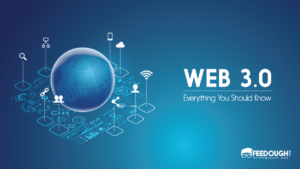
Web 3 is the third generation of the World Wide Web and the new internet frontier. It is still in development, and it will be based on blockchain technology. The blockchain is a digital ledger that records all transactions using cryptocurrencies like Bitcoin. It is secure and tamper-proof, enabling businesses to conduct transactions securely online.
Web 3.0 will also allow businesses to create decentralized applications (dApps). These dApps will be more secure and efficient than traditional centralized applications.
What are the Benefits of Web 3.0?
The benefits of Web 3.0 include:
- Increased security: As mentioned earlier, the blockchain is a secure and tamper-proof technology. This will ensure that businesses conduct transactions securely online without fear of cybercrime.
- Increased efficiency: The blockchain is also a very efficient technology. This means that businesses will be able to conduct transactions even more quickly and efficiently than Web 2.0. The blockchain will allow companies to reach their customers directly without an intermediary.
- Reduced costs: The blockchain is a decentralized technology. This means that businesses will not need to rely on third-party intermediaries to conduct transactions. This will reduce the costs associated with doing business online.
- User-friendly: One of the goals of Web 3.0 is to make it more user-friendly. This means that even people who are not familiar with the technical aspects of the internet will be able to use it easily.
The vision for Web 3.0 is to create a more decentralized web that is powered by blockchain technology. This would make the internet more secure, efficient, and user-friendly. The benefits of Web 3.0 will be felt by businesses and users alike.
What is the future of Web 3.0?
The future of Web 3.0 is fascinating. The technology is still in its early stages, and there are many potentials for it to grow. We can expect to see more businesses using the blockchain to conduct transactions and create dApps. The user-friendliness of the technology will also increase, making it more accessible to everyone.
The possibilities are endless, and we can only wait to see what the future of Web 3.0 holds.
Web 3.0 crypto coins list

Web 3.0 is based on blockchain, and new crypto coins emerge daily. Still, only some survive the complexity and sheer competition in the crypto industry. Following are some of the well-known crypto coins that are the most used worldwide.
- Bitcoin: The granddaddy of all cryptocurrencies, Bitcoin was first the most well-known cryptocurrency.
- Ethereum: Launched in 2015, Ethereum is a decentralized software platform that enables Smart Contracts and Decentralized Applications (DApps) to be built and run without downtime, fraud, or third-party interference.
- Litecoin: A peer-to-peer cryptocurrency and open source software project released under the MIT/X11 license.
- Bitcoin Cash: A fork of Bitcoin that occurred in August 2017. It is a cryptocurrency and a payment network.
- EOS: A blockchain platform for developing decentralized applications (dApps).
- IOTA: IOTA is a revolutionary new transactional settlement and data transfer layer for the Internet of Things.
- NEO: NEO is a blockchain platform and cryptocurrency designed to build an intelligent economy.
- Cardano: A decentralized public blockchain and cryptocurrency project that focuses on delivering better financial services to all users.
- Stellar: A distributed network that connects people to low-cost financial services.
- TRON: TRON is a blockchain-based platform that aims to build a free, global digital entertainment system.
These are just some of the most well-known Web 3.0 crypto coins. Many others are being developed and used to power the new decentralized web.
Web 1, 2, and 3: What do we lose in the migration?
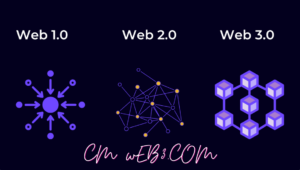
When we think about the internet, we often take for granted how it has become an integral part of our lives. We use it for work, play, and connecting with loved ones. It’s hard to imagine life without it.
Since its humble beginnings, the internet has come a long way as a military communication tool. It has evolved into a complex network of interconnected computers and devices that we rely on daily.
The first generation of the internet, known as Web 1.0, focused on providing users information. Websites were static, and experts created content. When the Worldwide Web moved into Web 2.0, the focus shifted to collaboration and user-generated content. This was made possible by developing social media, blogs, and wikis.
The upcoming generation of the internet, known as Web 3.0, is focused on decentralization and blockchain technology. This will allow businesses to create their decentralized applications (dApps). These dApps will be more secure and efficient than traditional centralized applications.
Web 1.0, 2.0, and 3.0 are all important steps in the evolution of the internet. Each generation has brought with it new opportunities and challenges. We can only wait to see what the future of the internet holds.
Conclusion
The internet has become a powerful tool used to connect people across the globe. Web 1.0 focused on providing information and static websites, but it evolved into something much more complex with time. Web 2.0 became all about collaboration and user-generated content. At the same time, 3.0 will focus on decentralization through blockchain technology and dApps.
Each generation offered unique opportunities and challenges, and we can only wait to see what the future of the internet holds. The Crypto industry is growing by the day with innovations and developments. Still, only a few coins can stay afloat.
FAQ
What is a dApp?
A dApp is a decentralized application built on top of a blockchain. These applications are more secure and efficient than traditional centralized applications.
What is blockchain technology?
Blockchain technology is the foundation of cryptocurrencies like Bitcoin and Ethereum. It is a distributed database that allows for secure, transparent, and tamper-proof transactions.
Does Web 3.0 already exist?
No, Web 3.0 is still in development and is not yet available to the public. However, many projects are working on bringing it to fruition.
When will Web 3.0 launch?
No one knows for sure, but 2022 is called the year of Web 3.0
What are Web 4.0 technology tools?
There is not much known about Web 4.0 yet. However, it is rumored to focus on artificial intelligence and quantum computing.
If you want to know about Crypto mining, click here.



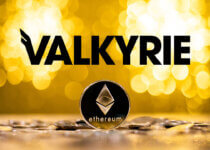
Good post. I learn something new and challenging on blogs I stumbleupon everyday. It will always be interesting to read articles from other authors and use a little something from their sites.
Cheers!